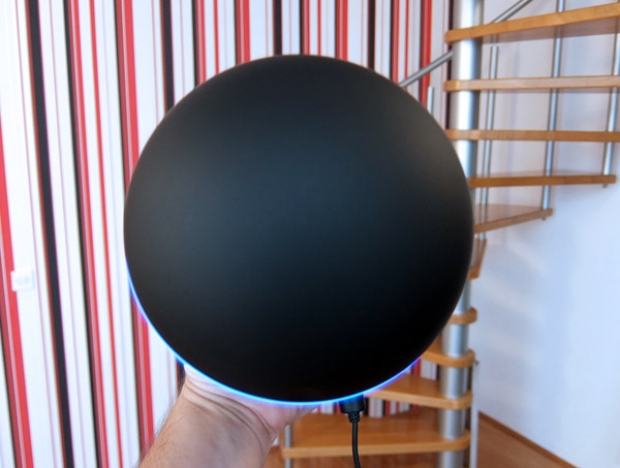Index
Overall Sphere barebones vs. Plus performance
Now let's take a look at overall performance, boosted by solid state storage and of course dual-channel memory.
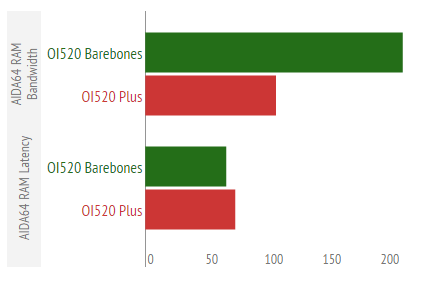
As far as memory performance goes, our barebones Sphere wipes the floor with the stock OI 520 Plus in AIDA64. The Plus version scores 12,189 MB/s in the memory bandwidth test, with a latency of 77.1ns. The barebones Sphere scored 22,063 MB/s and 69.3ns. The effect of dual-channel memory on CPU performance is not as evident as in GPU tests, but you are still looking at some minor improvements, usually on the order of 5% in CPU-bound applications.
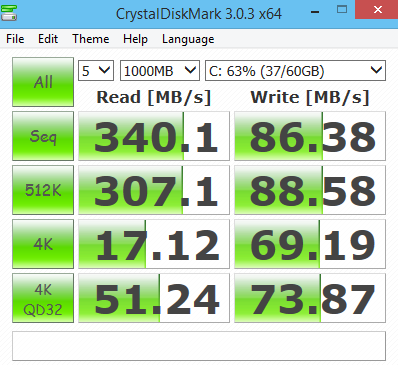
The biggest boost in overall performance comes from faster storage, not memory. Although we used a dirt cheap SSD launched in 2012, the storage test ended up looking like a confrontation between a Zumwalt-class destroyer and a Somali pirate dinghy. However, the old ADATA drive is all over the place in terms of bench results, as you can see in the screenshots.
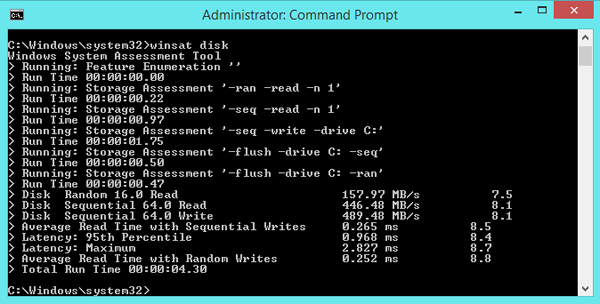
The simple (and relatively useless) winsat disk check hits the paper spec spot on, but the more realistic HD Tune and Crystal fall short
Bear in mind that this is a relatively dated model and if you are willing to invest in a current generation SSD, the performance gap is bound to be even wider.
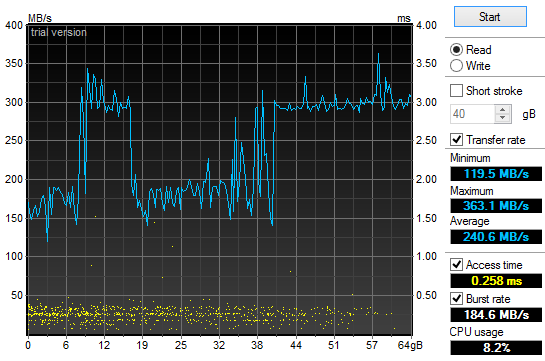
An HDD is simply not a good match for a Core i5 Haswell, even in ULV flavour, as it bottlenecks performance.
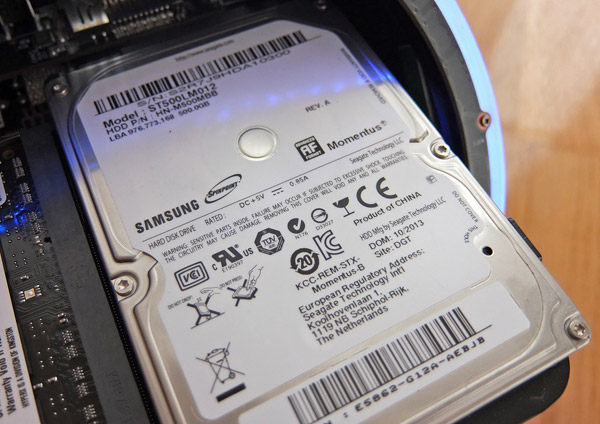
Although it's a bottleneck, the HDD offers solid performance - but the rest of the system is just too fast
If we were dealing with a Bay Trail or Kabini nettop, adding a speedy SSD would still make a difference, but a much smaller difference, as the CPU would eventually end up bottlenecking the system. Using an HDD on such low-end systems is still justifiable, but it really doesn't make much sense on a Core i5 system.

The 500GB HDD is not slow, but even the moody ADATA SSD leaves it in the dust
The OI520 Plus scores 2161 in PCMark 8 (Home), but our barebones OI520 hit 2817. That's a 30% boost in one of the most popular and accurate general performance benchmarks out there.
Actually, overall performance is so good that Zotac may have a bit of a marketing problem on its hands – many consumers associate mini-PCs with underpowered nettops, but configurations like the Sphere OI520, Gigabyte Brix Pro or high-end Intel NUC models are powerful enough to serve as the primary PC in most homes and offices. The Sphere also looks the part.
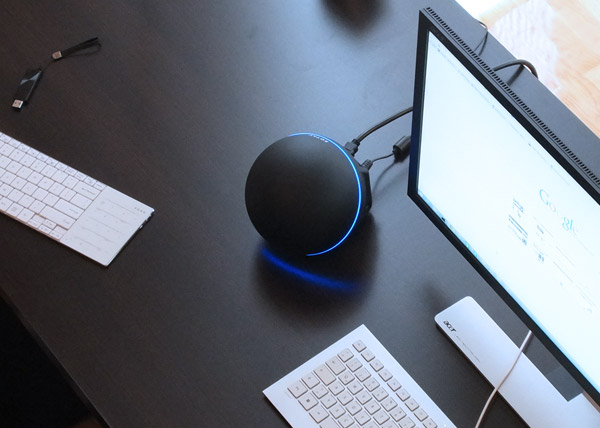
The OI520 is fast enough for the vast majority of office users, regardless of storage configuration
Perhaps it is time for Zotac to start offering a new tier of ZBOX Plus models based on 'big core' CPUs, with dual-channel memory and fast solid state storage? George Orwell would probably brand them DoublePlusGood.
As far as the whole barebones idea is concerned, our only complaint is the 2.5-inch bay. With so much volume to go around, designers could have found a few extra millimetres to accommodate even 15mm drives, allowing users to reuse old drives or install a 2TB 15mm drive. In theory, there is enough room to fit two 2.5-inch bays, but this would inevitably make the design costlier and more difficult to cool and assemble. However, it would be a boon for DIY lovers keen to reuse old 2.5-inch SSDs and HDDs. But that's just nitcpicking – even the 2.5-inch/mSATA combo is better than what you’d get on most mini-PCs.

